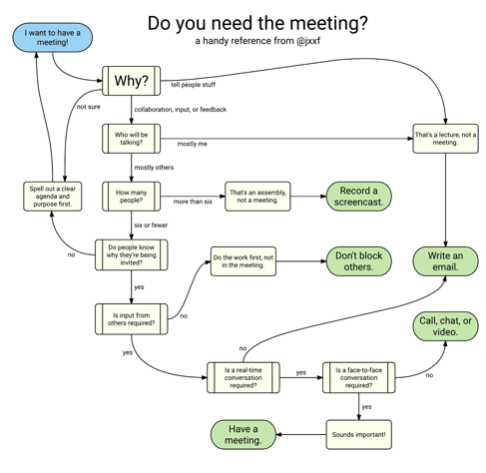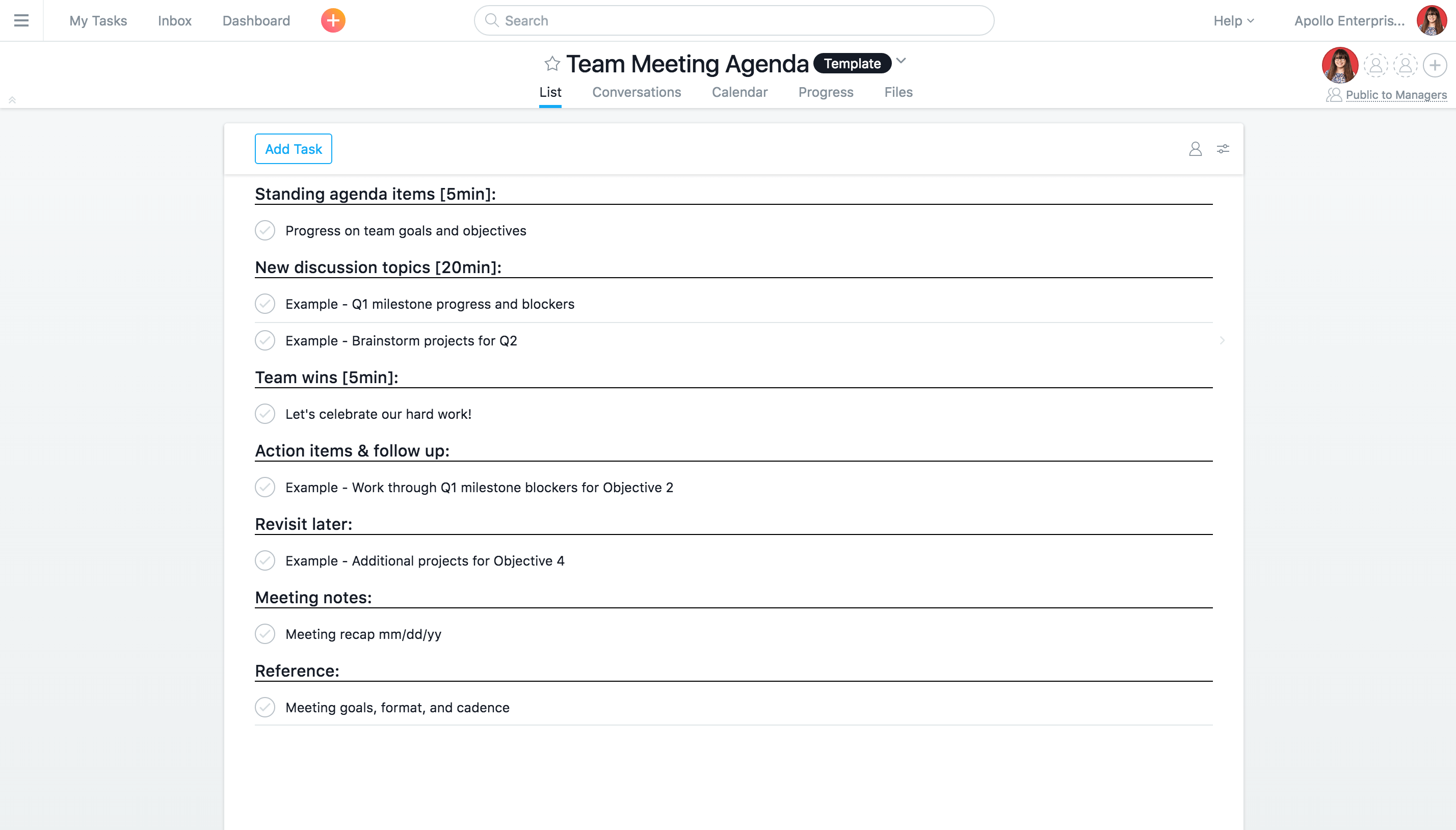Product marketers have to be great at a lot of things. This includes everything from writing and presentations, to positioning and technical aptitude, to understanding customers, sellers, and the competitive landscape.
But one underrated skill set I don’t hear many talk about: running an effective meeting.
Granted, this isn’t just a great skill for a product marketer—it can benefit every member of your organization. But, it’s especially important for product marketers because so much of our work is collaborative and cross-functional.
Our meetings are designed to produce results—from interviewing customers, pulling together a tiger team, or aligning with internal stakeholders on a major initiative.
As product marketers, we can drive better and faster outcomes when we lead effective meetings.
Whether it’s a quick sync or a longer strategy session, below are eight things you need to consider to lead an effective meeting:
- #1: Do you need the meeting?
- #2: Share the agenda and materials in the invite description
- #3: Don’t default to 30 minutes
- #4: Kick off with goals/agenda and allow others to add
- #5: Read the room
- #6: Balance meeting efficiency with human connection
- #7: Intentionally give attendees a chance to speak, ideate, collaborate
- #8: End on time, or ask permission for extra time
#1: Do you need the meeting?
With email, Slack, and on-demand video, the first thing you need to ask yourself is if you even need a meeting.
Here are a couple of examples:
- Can your update be a Slack message on a team channel?
- Can creative direction be a screencast watched by your web or design team when they get to your ticket?
It’s amazing how many meetings can be cleared off your weekly calendar if you just think about a good alternative to a meeting.

#2: Share the agenda and materials in the invite description
Now that you’ve decided the meeting requires a face-to-face conversation, make it worth everyone’s while.
Be clear about your desired outcomes for the meeting and share any materials that invitees can review in advance.
This gives invitees the option to bow out and prioritize their time differently, or bow out but review and provide comments in advance of the meeting.

#3: Don’t default to 30 minutes
It’s amazing how much can be done in 15 minutes. It can be so much more effective than a handful of emails or Slacks exchanged over the course of the day.
On the other hand, it’s also amazing what 45 minutes can do. Sometimes you need more than the default 30 minutes for real discussion or some quick brainstorming. It’s also less psychologically daunting for attendees than a full hour meeting.
#4: Kick off with goals/agenda and allow others to add
I like to remind everyone of meeting goals and agenda upfront—giving everyone, including myself, a chance to context switch. Especially in these days of back to back Zoom meetings.
It’s also sometimes worth asking attendees if they have any agenda items they’d like to add or what they wanted to get out of the meeting.
Now it’s up to you as the meeting facilitator to prioritize the agenda, and park items if you don’t think there’s enough time.
#5: Read the room
This is the hardest thing to do, but you brought everyone together; you need to make sure every attendee is bringing value.
- Watch people’s facial and body expressions. Are they engaged, are they listening, do they look confused or impatient?
- Say people’s names. Especially when they seem disengaged. It reminds them their participation is valued.
- Make sure everyone has a chance to participate and intentionally make room for those who are less vocal.
- When in doubt, be direct: ask attendees if the meeting is a good use of their time and if they have suggestions on making the meeting more effective.
#6: Balance meeting efficiency with human connection
You have an agenda and have goals you want to fulfil within the allocated time.
Therefore, as the meeting organizer, you have to keep the conversation on track, put off topic discussions in a parking lot, gently interrupt and steer everyone back to the stated goals and outcomes.
That said, it’s also nice to facilitate a little bit of human connection. This is important for relationship building and cross-functional collaboration, which product marketers need to be so good at.
What do I mean? Smile. Crack a few jokes. Check in on something light you read on Slack.
At the end of the day, getting work done is really about relationships.
#7: Intentionally give attendees a chance to speak, ideate, and collaborate
It’s too easy for a meeting organizer to launch into an agenda, and go through each topic too fast. If you bring people together, you likely want to hear their thoughts, right?
But all too often, you’ll ask the group for a response and not get much back.
There are several aways you can foster more participation amongst the people in your meeting:
- Pause long enough to let people think.
- Call on specific people. You could call specifically on people who are reacting with facial expressions.
- For brainstorming, use visual collaboration tools.
- A simple Google doc can help structure the conversation, reduce the tendency to circle a topic too long, foster actual collaboration vs. just talking.
For virtual meetings, you’ll have to decide when it makes sense to share a screen to collaborate versus keep everyone focused on each other.
#8: End on time, or ask permission for extra time
Respect your attendees’ time by ending meetings on time.
Sometimes, this will mean you’ll have to interject and remind people the meeting is ending.
- Ask if people have a hard stop or want to continue or take it offline.
- Do this at least 5 minutes before the end of the meeting.
- Better yet, do it 10 minutes before the end of the meeting, and give everyone 5 minutes back.
There, that’s it. If you have other great recommendations, please find me on LinkedIn and share. I’d love to learn from you.


















 Follow us on LinkedIn
Follow us on LinkedIn



.svg?v=176eabd947)